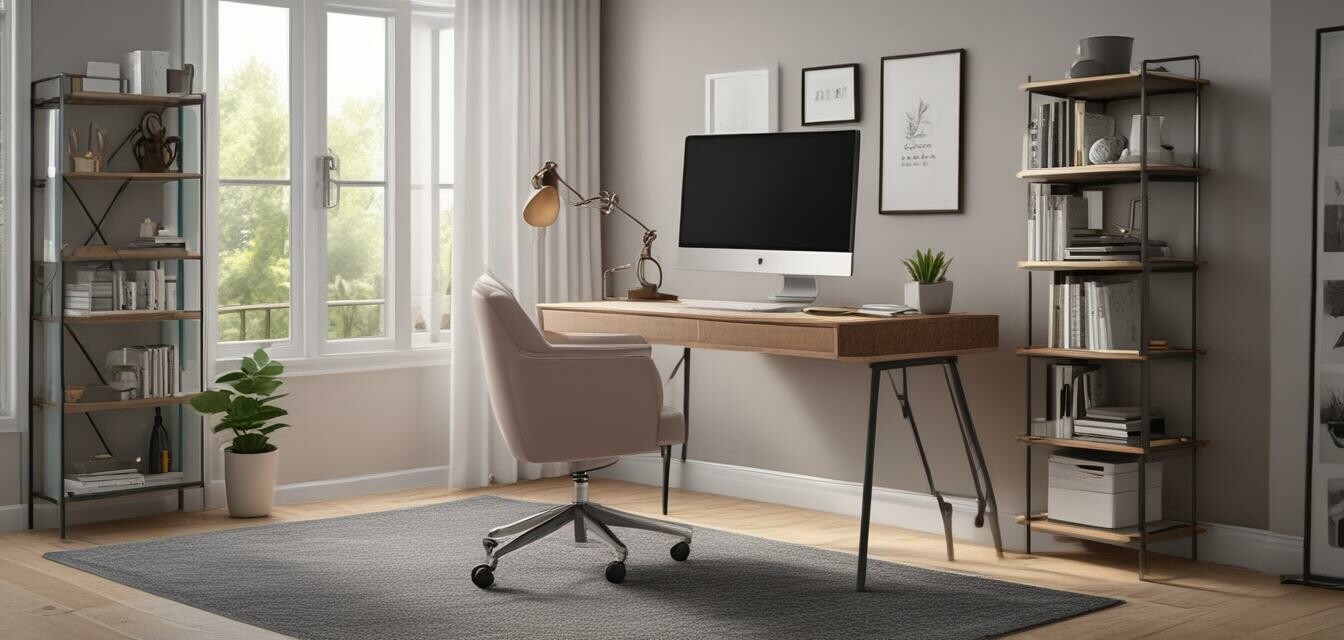
Hybrid Workspaces: The New Norm for Home Offices
- Hybrid workspaces combine remote and office elements for improved productivity.
- Modern home office furniture is designed for functionality, creating adaptable work environments.
- Investing in ergonomic furniture promotes better posture and comfort.
- Flexibility is key to designing a successful hybrid workspace.
- Keeping updated with new trends helps maintain a stylish home office.
The shift towards hybrid workspaces is transforming the way we think about home office furniture. As more employees split their time between traditional office environments and their homes, the demand for adaptable, functional, and stylish furniture has significantly risen. Understanding the essence of hybrid workspaces can help you create a professional yet comfortable home office setup.
Understanding Hybrid Workspaces
Hybrid workspaces refer to environments that integrate both remote and traditional work elements. This concept has rapidly gained traction, influencing how furniture is designed and utilized. The key characteristics of hybrid workspaces include:
- Flexibility to work from different locations
- Integration of technology and innovative designs
- A focus on employee well-being and productivity
The Impact on Office Furniture Design
Hybrid workspaces demand furniture that is not only functional but also aligns with the aesthetics of home environments. Here are some trends shaping the design of office furniture:
| Trends | Description |
|---|---|
| Ergonomic Designs | Focusing on comfort and health, ergonomic furniture supports better posture. |
| Modular Furniture | Furniture that can be rearranged to fit different needs and spaces. |
| Sustainable Materials | Increased use of eco-friendly materials in production. |
| Technology Integration | Incorporating technology features, such as cable management and charging stations. |
Essential Furniture Pieces for a Hybrid Workspace
When setting up a hybrid workspace, several key furniture pieces should be considered:
- Office Desks: A suitable desk is crucial for your workspace efficiency. Look for adjustable desks to enhance flexibility.
- Ergonomic Chairs: Investing in a quality chair ensures comfort during long working hours.
- Storage Options: Choose filing cabinets and bookcases that fit seamlessly into the overall design.
- Lighting: Good lighting can improve focus and productivity; consider stylish lighting solutions.
- Decorative Accessories: Personalize your workspace with decorative items that inspire creativity.
Creating a Functional Hybrid Workspace
Designing a hybrid workspace goes beyond just purchasing furniture. Here’s how to create a functional setup:
Tips for Beginners
- Evaluate your space: Consider the size and layout of your home office.
- Consider your working style: Adapt the furniture to your work habits.
- Incorporate technology: Ensure easy access to necessary technology tools.
- Maintain organization: Use storage solutions to keep your workspace tidy.
- Regularly update your setup: Stay informed about trends that can refresh your space.
Trends to Watch in Home Office Furniture
Keeping up with trends can help you make informed decisions about your home office setup. Some emerging trends include:
- Biophilic Design: Incorporating natural elements into the workspace for improved well-being.
- Multi-functional Furniture: Pieces that serve multiple purposes to save space.
- Customizable Solutions: More options for tailoring furniture to individual preferences.
- Height-adjustable Desks: Promoting movement throughout the workday.
Conclusion
Embracing hybrid workspaces is essential in today’s working environment. Adapting your home office with functional furniture and staying updated with current trends can create a workspace that enhances productivity and comfort. For those looking to dive deeper into office furniture options, you can explore our articles on office desks, ergonomic chairs, and bookcases & shelving.
Pros
- Increased flexibility and productivity
- Improved comfort with ergonomic solutions
- Customization options for personal style
- Sustainability in material choices
Cons
- Potentially higher initial investment
- Requires ongoing maintenance and updates
- Challenge of balancing workspace with home aesthetics